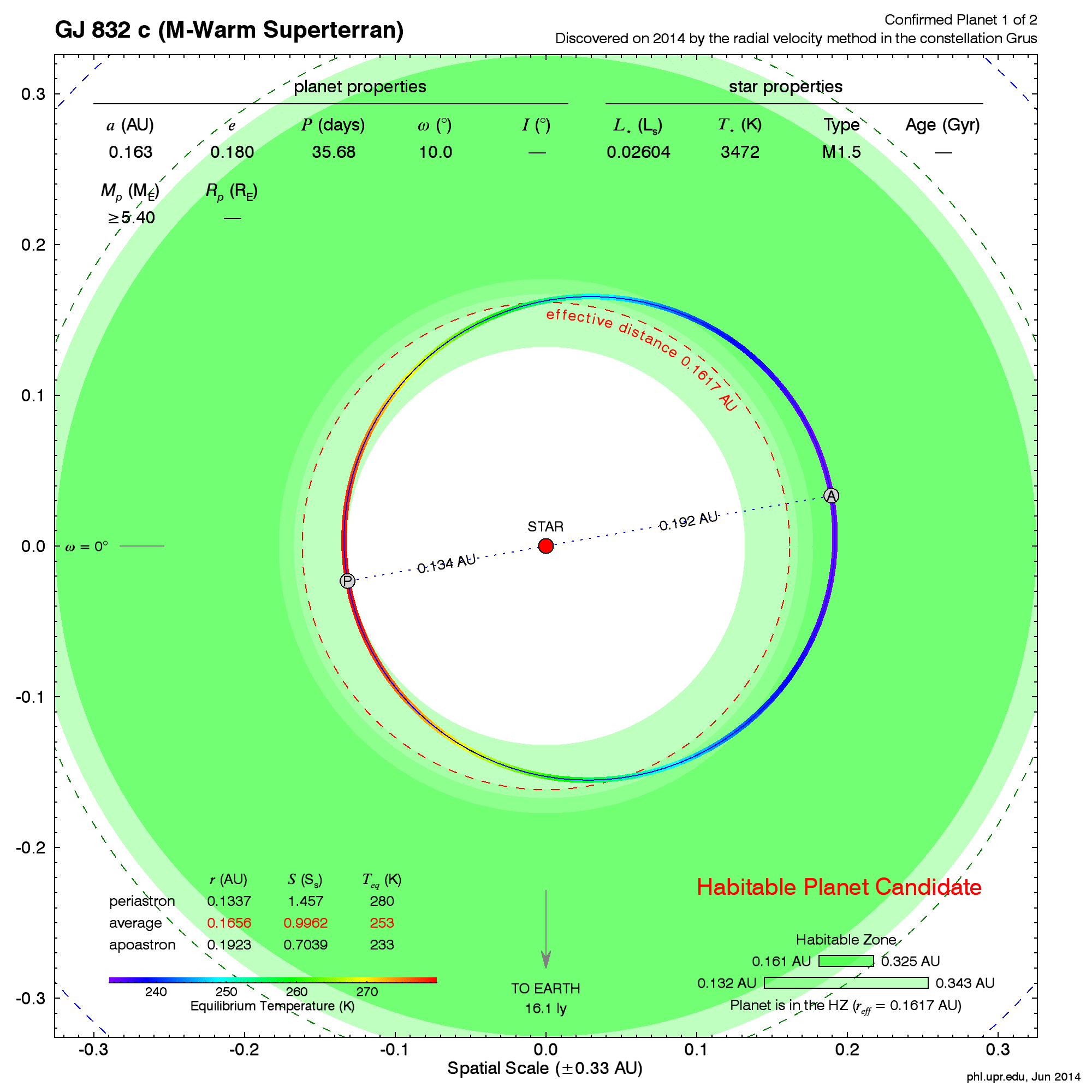Right Now
The Known Universe by AMNH
The Known Universe takes viewers from the Himalayas through our atmosphere and the inky black of space to the afterglow of the Big Bang. Every star, planet, ...
The Known Universe by @AMNH and Gliese 832 c, the nearest best habitable world candidate so far.
This blows my mind. If we could just figure out a way to get there.
An international team of astronomers, led by Robert A. Wittenmyer from UNSW Australia, report the discovery of a new potentially habitable Super-Earth around the nearby red-dwarf star Gliese 832, sixteen light years away. This star is already known to harbour a cold Jupiter-like planet, Gliese 832 b, discovered on 2009. The new planet, Gliese 832 c, was added to the Habitable Exoplanets Catalog along with a total of 23 objects of interest. The number of planets in the catalog has almost doubled this year alone.
Gliese 832 c has an orbital period of 36 days and a mass at least five times that of Earth's (≥ 5.4 Earth masses). It receives about the same average energy as Earth does from the Sun. The planet might have Earth-like temperatures, albeit with large seasonal shifts, given a similar terrestrial atmosphere. A denser atmosphere, something expected for Super-Earths, could easily make this planet too hot for life and a "Super-Venus" instead.
The Earth Similarity Index (ESI) of Gliese 832 c (ESI = 0.81) is comparable to Gliese 667C c (ESI = 0.84) and Kepler-62 e (ESI = 0.83). This makes Gliese 832 c one of the top three most Earth-like planets according to the ESI (i.e. with respect to Earth's stellar flux and mass) and the closest one to Earth of all three, a prime object for follow-up observations. However, other unknowns such as the bulk composition and atmosphere of the planet could make this world quite different to Earth and non-habitable.
So far, the two planets of Gliese 832 are a scaled-down version of our own Solar System, with an inner potentially Earth-like planet and an outer Jupiter-like giant planet. The giant planet may well have played a similar dynamical role in the Gliese 832 system to that played by Jupiter in our Solar System. It will be interesting to know if any additional objects in the Gliese 832 system (e.g. planets and dust) follow this familiar Solar System configuration, but this architecture remains rare among the known exoplanet systems.
-
 A Nearby Super-Earth with the Right Temperature but Extreme Seasons - Planetary Habitability Laboratory @ UPR Arecibo
A Nearby Super-Earth with the Right Temperature but Extreme Seasons - Planetary Habitability Laboratory @ UPR Arecibo
The Planetary Habitability Laboratory (PHL) is a virtual laboratory dedicated to the study of planetary habitability. The PHL is managed by the University of Puerto Rico at Arecibo (UPR Arecibo)
Sign In to leave a comment
More Posts

Report This Post
Please complete the following requested information to flag this post and report abuse, or offensive content. Your report will be reviewed within 24 hours. We will take appropriate action as described in Findit terms of use.
Thank you. Your abuse report was sent.



























